The Independent's journalism is supported by our readers. When you purchase through links on our site, we may earn commission.
Famed ballerina Misty Copeland recreates the paintings of Degas
The principal dancer at the American Ballet Theatre posed as some of Degas' most iconic subjects
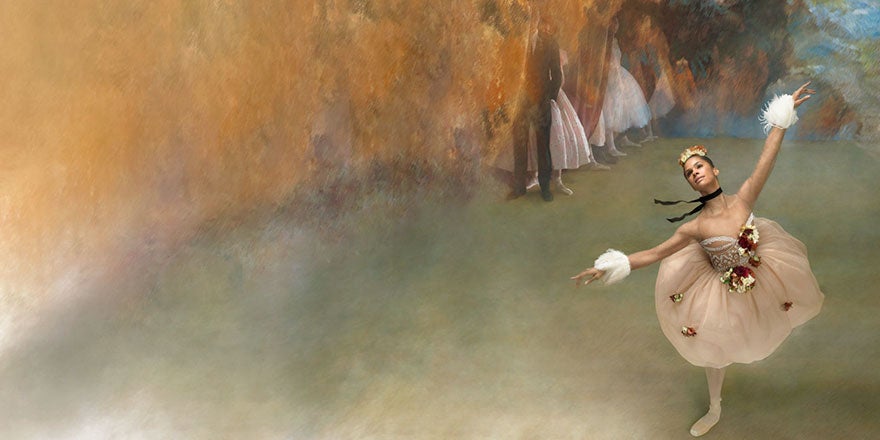
Your support helps us to tell the story
From reproductive rights to climate change to Big Tech, The Independent is on the ground when the story is developing. Whether it's investigating the financials of Elon Musk's pro-Trump PAC or producing our latest documentary, 'The A Word', which shines a light on the American women fighting for reproductive rights, we know how important it is to parse out the facts from the messaging.
At such a critical moment in US history, we need reporters on the ground. Your donation allows us to keep sending journalists to speak to both sides of the story.
The Independent is trusted by Americans across the entire political spectrum. And unlike many other quality news outlets, we choose not to lock Americans out of our reporting and analysis with paywalls. We believe quality journalism should be available to everyone, paid for by those who can afford it.
Your support makes all the difference.Edgar Degas always perceived the powers of beauty, and of grace. His captured moments of ballerinas on stage, or in rehearsal; all intimate glimpses of le beau ideal within ordinary experience.
Misty Copeland's own rise to fame, as the first African-American woman to be named principal dancer at the American Ballet Theatre, echoes her own ability to capture that sense of aesthetic perfection within the formidable grace of her onstage presence. A perfect candidate, then, to revisit Degas' ballerina pieces; particularly in Copeland's own position in helping to readdress where diversity sits amongst the conceived image of the classical ballerina.
The dancer is the subject of a series of photographs captured by Ken Browar and Deborah Ory for Harper's Bazaar, as part of an interview which examines Copeland's own place in ballet's history. "When we were approached to shoot Misty Copeland for Harper’s Bazaar – as if in a Degas painting – we took the challenge because we felt the very act of producing these images would be a barrier-breaking statement," Ory told Bored Panda.
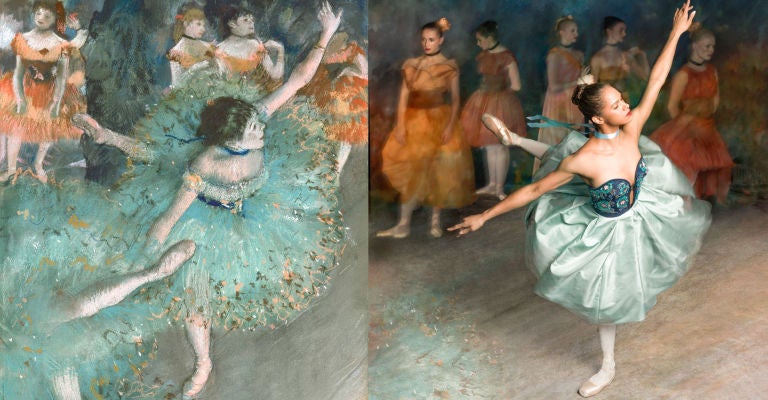
"It was interesting to be on a shoot and to not have the freedom to just create like I normally do with my body," Copeland relayed in her interview piece. "Trying to re-create what Degas did was really difficult. It was amazing just to notice all of the small details but also how he still allows you to feel like there’s movement.That's what I think is so beautiful and difficult about dance too. You're trying to strive for this perfection, but you still want people to get that illusion that your line never ends and that you never stop moving."
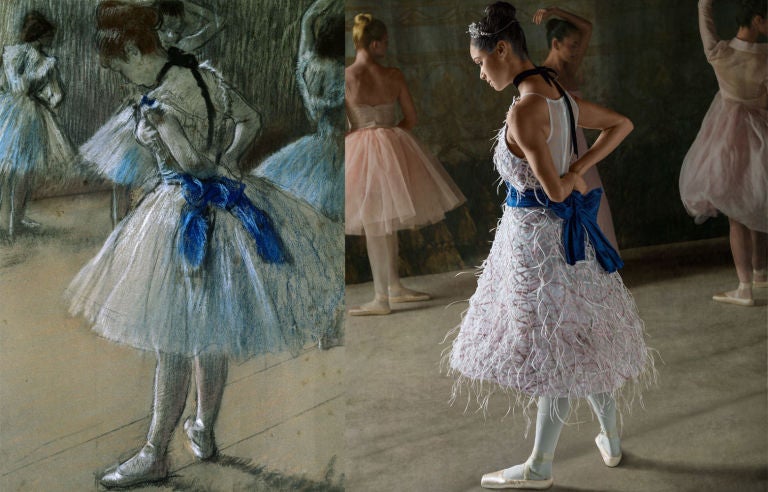
Indeed, what was so revolutionary in Degas' work was his daring to find beauty in labour; to show women practising, striving, resting. "I see a great affinity between Degas's dancers and Misty," said Thelma Golden, director and chief curator of the Studio Museum in Harlem. "She has knocked aside a long-standing music-box stereotype of the ballerina and replaced it with a thoroughly modern, multicultural image of presence and power. Misty reminds us that even the greatest artists are humans living real lives."
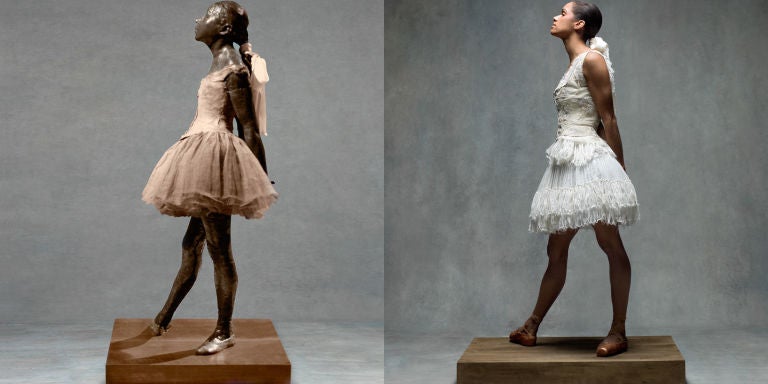
"I definitely feel like I can see myself in that sculpture—she just seems content but also reserved," Copeland said of her recreation of Degas' iconic bronze sculpture, 'Little Dancer Aged Fourteen'. "I was really shy and introverted at that age. I don't even have an image in my head of what I remember a ballerina being or existing before I took a ballet class. Ballet was just the one thing that brought me to life."
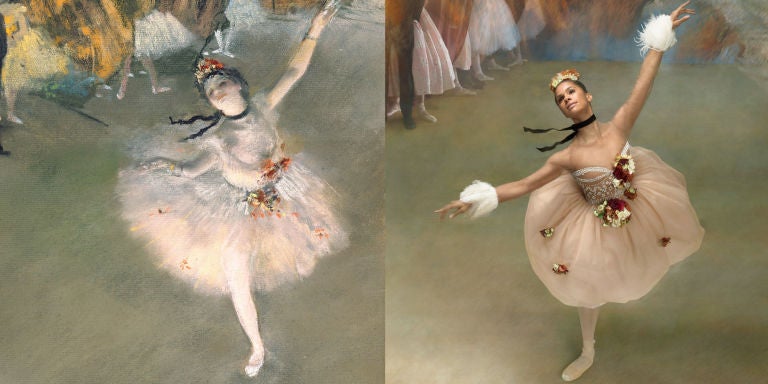
The photographs are part of the promotion for New York's Museum of Modern Art's upcoming exhibition Edgar Degas: A Strange New Beauty.
Join our commenting forum
Join thought-provoking conversations, follow other Independent readers and see their replies
Comments